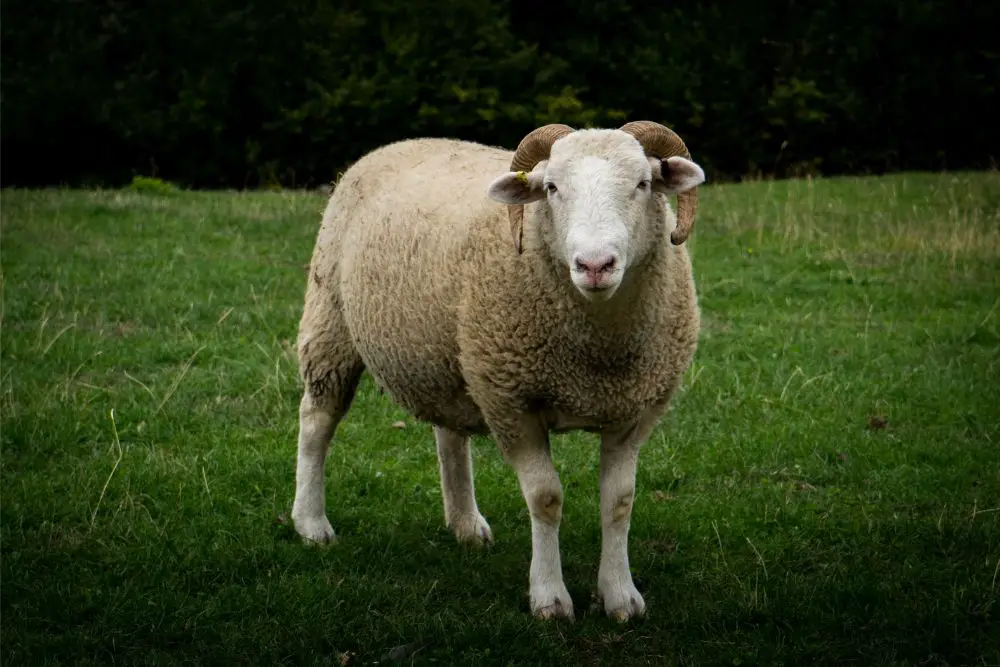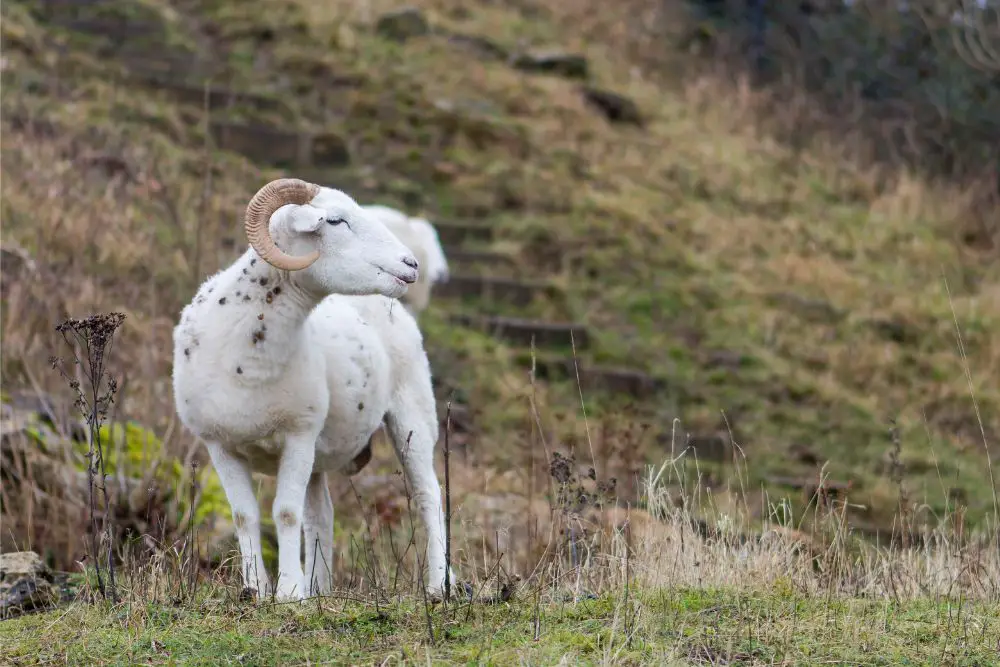Wiltshire Horn sheep are a large-sized, white domestic hair sheep breed that sheds their own wool. Wiltshire Horn sheep are great for both small scale producers and commercial operations for meat production.
This article covers the history of the Wiltshire Horn sheep and their breed characteristics, plus the positive attributes and benefits of owning this unique breed.
Table of Contents
Where Does The Wiltshire Horn Sheep Come From?
The Wiltshire Horn sheep is one of the horned heritage breeds native to southern England. They were one of the most popular sheep breeds in the 18th century, with numbers surpassing half a million.
This breed fell out of favor in the 19th and 20th centuries as polled sheep became popular, to the point of near extinction.
Luckily, the Wiltshire Horn Sheep Society was formed in 1923 in an attempt to save this sheep breed because of the strength of their genetics.
Using Wiltshire Horn sheep as terminal sires, they have passed on desirable traits through crossbreeding and serve as a foundational breed for the Katahdin, Easycare, Wiltipoll, Hampshire, Southdown, and other important sheep breeds.
In the 50’s and 60’s, Wiltshire Horn sheep were shipped to farms in several different countries including New Zealand and Australia, where they thrived and large purebred flocks still exist today.
Yet, only 45 known flocks existed in the U.K. in the early 1980’s.
Wiltshire Horn sheep continue to be a rare breed in the United States as well, despite importation attempts as early as the 1600’s.
The Livestock Conservancy currently has the Wiltshire Horn sheep on watch status due to their rarity worldwide.
Wiltshire Horn Sheep Breed Characteristics
| Characteristics | Description |
| Origin | South England |
| Appearance | Both rams and ewes should have a white face and a broad and long head, with large eyes. They should have a roman nose, and nostrils that are wide. The ribs are considered well sprung and they should have wide shoulders and a long back, with strong, short legs that support the weight of the sheep well. Ram horns are distinctive and feature a second curveWoolSelf-shedding and not used for wool productionWeightRams weight 250lbs and 300lbs Ewes weight 125lbs and 150lbs |
| Fertility | Very high with Ewes making great mothers |
| Meat | Flavorsome and highly regarded |
| Environment | Does best in cooler climates |
| Common Uses | Meat production only |

What Kind Of Fleece Does the Wiltshire Horn Sheep Produce?
The Wiltshire Horn sheep is a breed of sheep that is not typically used for wool production. They are regarded most often as a hair sheep breed, because they have a coarse hair coat which is close to the skin though technically they fall between a short wool sheep, and a hair sheep breed.
Wiltshire Horn sheep may grow a woolen undercoat in winter but they shed it by the summer, eliminating the need for shearing. This is both a time and cost-saving measure for meat production purposes.
Interestingly, the Livestock Conservancy does consider the Wiltshire Horn Sheep to have a small amount of wool that may be worth using in an experimental sense and created a fiber profile for it. The trouble with the wool is that it can vary drastically depending on the specimen it was gathered from, so no true standard can be achieved.
Why Should I Raise Wiltshire Horn Sheep?
The Wiltshire Horn sheep makes sense economically as a great choice for most farming operations and there are numerous reasons why you should consider raising Wiltshire Horn Sheep on your sheep farm:
- Flavorful quality meat that is highly valued
- No shearing required as it naturally sheds its coat
- Wiltshire horn ewes have high fertility and are good mothers
- Wiltshire horn rams can be used by breeders as terminal sires
- Wiltshire Horn sheep are suited to both indoor and outdoor farming
- They are a hardy breed with strong constitution
- High vitality seen in lambs at birth
- They can put on a lot of muscle without adding excess fat

